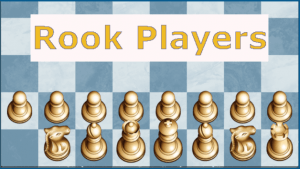
Catalans
|
Joan Carbó i Batlle was born the same year as Paul Morphy. In fact, Batlle was just 3 weeks older than his more famous contemporary. Also a lawyer, though born in Tarragona, Catalonia, Batlle with his two friends, Judge Josep-Salvi Fàbregas and the playwright Josep Pin i Soler (who authored "Problemes d’Escacs d’Autors Catalans Contemporanis" in 1889) helped form the Club Escacs Tarragona. Batlle himself wrote an opening book, "Coleccion de Aaberturas Seguidas Para su Aplicacion Práctica" in 1868.  Joan Carbó i Batlle One of Batlle's chess-problem students was José Tolosa y Carreras who was actually Batlle's elder by 11 years (and outlived him by 14). Tolosa was a medical doctor, but, being independantly wealthy, he spent more time at chess than in practicing medicine. In the 1860s Tolosa frequented the Café de Recreo on la calle Escudillers in Barcelona (the chess club there was founded in 1860 by José María Baquero Vidal, Eusebio Riú Canal, Hilarión Soler Alomá and Carles Bosch of Trinxeria) which, like it's also more famous contemporary, the Café de la Régence, catered to literary people, philosophers, whist, billiard and chess players. Much of the chess in Catalonia has its origins in coffeehouses such as the Café Munich, the Cafè Anglès and, of course, the Café del Recreo.  José Tolosa y Carreras José Tolosa y Carrera is honored as a great chess player, but he was more of a chess problemist. Here are some examples of his work: from "La Ilustracion Artistica," Dec. 1898
Vol. 1 of the "American Chess Magazine" (1897) gives Carreras advice for beginner problem solvers:
The above 3-mover was highlighted in the "Nuova Rivista degli Scacchi" in 1895
Tolosa Carreras and his former teacher Batlle played a well known game. Irving Chernev featured it in his 1955 book, "1000 Best Short Games of Chess," misspelling Batlles' name in the process (as "Battle," a forgivable misspelling shared on occassion by several periodicals, the "American Chess Bulletin" and the "BCM" among them - and ironically at chessgames.com where I appropriated the .pgn)
Tolosa Carreras published his one book, "Traité analytique du probleme d'échecs," written in French, in Paris 1892. He collaborated on a book of problems with Batlle and on a Ruy Lopez analysis with Joan Capó i González.
The above nameplate tells us that this book ("A Collection of the Games Played and a Selection of the Problems sent in for Competition" by J. Lowenthal, 1864) was originally part of Tolosa library but bequeathed to José Paluzíe y Lucena (one of the greatest Catalonian chess collectors). Just as Tolosa Carreras studied chess problems under Batlle, Lucena tutored under Carreras. Lucena was a new generation of Catalan chess players. If possible, he was even more versitile than both Tolosa Carreras and Batlle. An engineer by profession, he was also a chess player, composer, writer, organizer, teacher, manager and historian. His massive "Manual de Ajedrez" has been considered one of the best Spanish instruction manuals. His other books are "Preliminares, Estrategia, Apertures, Finales, Problemas and Miscelanea." José Paluzíe y Lucena Lucena's "Manual de Ajedrez" contains this dedication 
|










